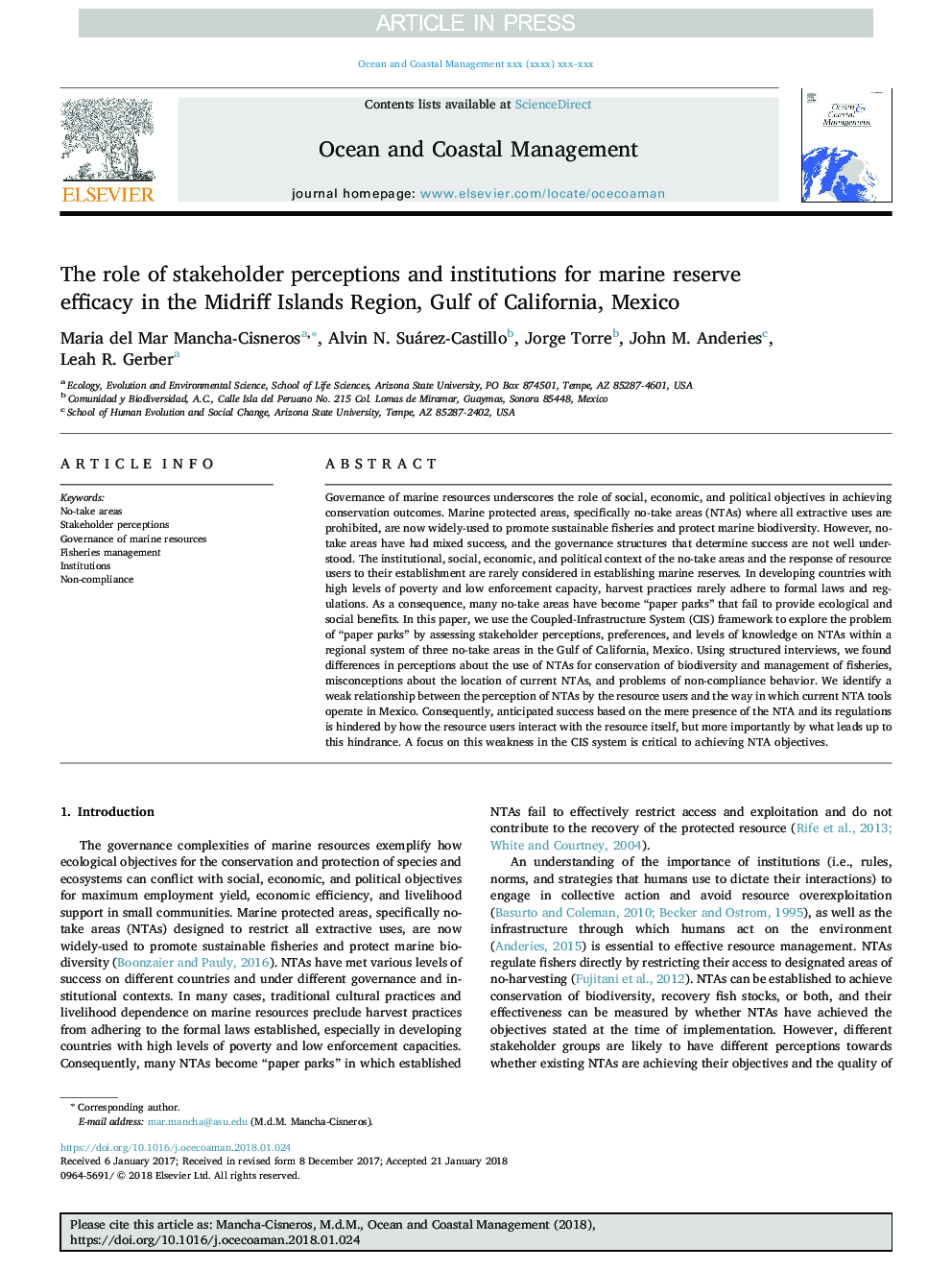| کد مقاله | کد نشریه | سال انتشار | مقاله انگلیسی | نسخه تمام متن |
|---|---|---|---|---|
| 8060597 | 1520467 | 2018 | 12 صفحه PDF | دانلود رایگان |
عنوان انگلیسی مقاله ISI
The role of stakeholder perceptions and institutions for marine reserve efficacy in the Midriff Islands Region, Gulf of California, Mexico
ترجمه فارسی عنوان
نقش ادراکات و نهادهای ذینفع برای اثربخشی ذخایر دریایی در منطقه جزایر میدریف، خلیج کالیفرنیا، مکزیک
دانلود مقاله + سفارش ترجمه
دانلود مقاله ISI انگلیسی
رایگان برای ایرانیان
کلمات کلیدی
مناطق بدون در نظر گرفتن، درک متقابل، مدیریت منابع دریایی، مدیریت شیلات، موسسات، عدم انطباق،
موضوعات مرتبط
مهندسی و علوم پایه
علوم زمین و سیارات
اقیانوس شناسی
چکیده انگلیسی
Governance of marine resources underscores the role of social, economic, and political objectives in achieving conservation outcomes. Marine protected areas, specifically no-take areas (NTAs) where all extractive uses are prohibited, are now widely-used to promote sustainable fisheries and protect marine biodiversity. However, no-take areas have had mixed success, and the governance structures that determine success are not well understood. The institutional, social, economic, and political context of the no-take areas and the response of resource users to their establishment are rarely considered in establishing marine reserves. In developing countries with high levels of poverty and low enforcement capacity, harvest practices rarely adhere to formal laws and regulations. As a consequence, many no-take areas have become “paper parks” that fail to provide ecological and social benefits. In this paper, we use the Coupled-Infrastructure System (CIS) framework to explore the problem of “paper parks” by assessing stakeholder perceptions, preferences, and levels of knowledge on NTAs within a regional system of three no-take areas in the Gulf of California, Mexico. Using structured interviews, we found differences in perceptions about the use of NTAs for conservation of biodiversity and management of fisheries, misconceptions about the location of current NTAs, and problems of non-compliance behavior. We identify a weak relationship between the perception of NTAs by the resource users and the way in which current NTA tools operate in Mexico. Consequently, anticipated success based on the mere presence of the NTA and its regulations is hindered by how the resource users interact with the resource itself, but more importantly by what leads up to this hindrance. A focus on this weakness in the CIS system is critical to achieving NTA objectives.
ناشر
Database: Elsevier - ScienceDirect (ساینس دایرکت)
Journal: Ocean & Coastal Management - Volume 162, 1 August 2018, Pages 181-192
Journal: Ocean & Coastal Management - Volume 162, 1 August 2018, Pages 181-192
نویسندگان
Maria del Mar Mancha-Cisneros, Alvin N. Suárez-Castillo, Jorge Torre, John M. Anderies, Leah R. Gerber,
